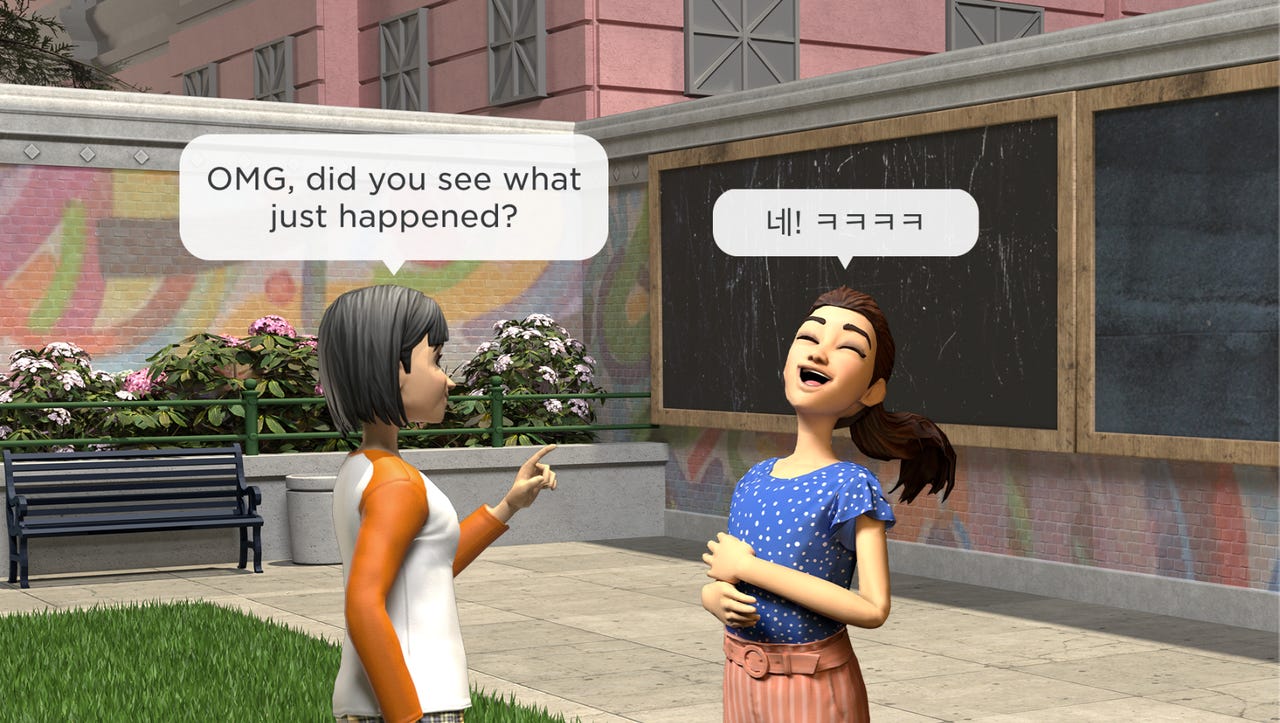
































Multi-player gaming can help you connect with people and make friendships with other players across the globe that you would have otherwise never met. However, language barriers can often pose a barrier to making those connections, and Roblox's new AI chat translator seeks to tackle that.
On Monday, Roblox released real-time AI chat translations in Roblox, which will allow its 70 million daily active users to communicate seamlessly in up to 16 different languages, including English, Chinese, Spanish, Korean, and more.
Also: 15 big ideas that will revolutionize industries and economies, led by AI
"Thanks to our new real-time AI chat translations, we've made possible on Roblox something that isn't even possible in the physical world -- enabling people who speak different languages to communicate seamlessly with one another in our immersive 3D experience," said Daniel Sturman, Roblox CTO.
Users can take advantage of the translation feature in any Roblox experience that has enabled Roblox's in-experience text chat service. The chat window will automatically translate any text into the person's native language without the user having to take any additional actions.
The translations happen in real time, with a latency of approximately 100 milliseconds, according to Roblox. This allows users to carry out a conversation with the same flow they regularly would, as seen in the video below.
Starting today, you can chat in real time with people who speak another language. Our multilingual model enables direct translation between any combination of 16 languages (with all of our safety tech as well). All on our own infrastructure/cloud.https://t.co/XCyF0hME5c pic.twitter.com/uZ1LWhEcFL
- David Baszucki (@DavidBaszucki) February 5, 2024
The user doesn't have to miss out on the original text. Instead, if they still want to see the original message, they can simply click the button next to the translated message.
To power the translator, Roblox built its own unified, transformer-based translation large language model (LLM), which can tackle the challenging task of translating a combination of 16 languages to each other in a single model, a resource-saving alternative to creating individual models that translate every pair, which would have totaled to 256 different models.
Also: AI meets AR as ChatGPT is now available on the Apple Vision Pro
Roblox shared that it is committed to improving its model's accuracy and, as a result, will be rolling out a tool to allow people to provide feedback on the translations, being able to report when something is mistranslated or even suggest a better translation.
The model is already available for use today. The complete list of languages includes English, Chinese (simplified), Chinese (traditional), French, German, Indonesian, Italian, Japanese, Korean, Portuguese, Russian, Spanish, Thai, Turkish, Polish, and Vietnamese.
 Hot Tags :
Innovation
Hot Tags :
Innovation